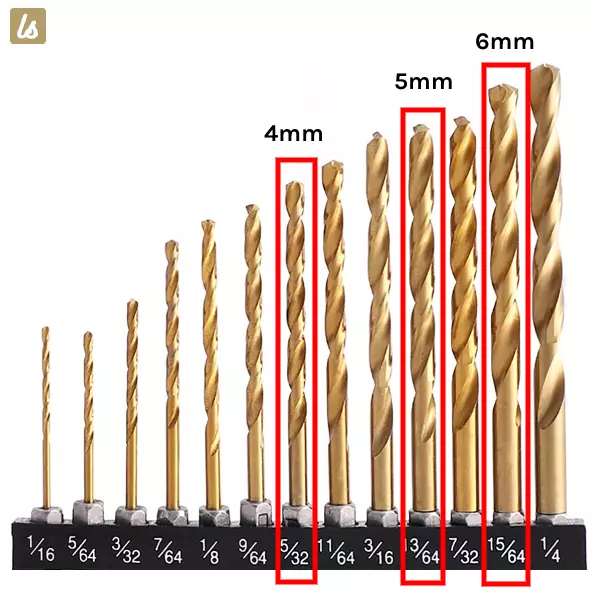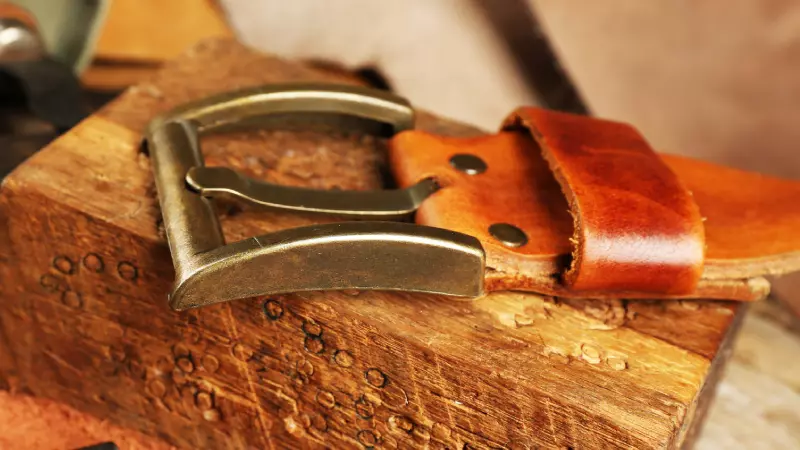4 Creative Ways to Punch a Hole In a Belt Without a Leather Punch
Holes are punched in leather belts as the last step in the manufacturing process or to existing leather belts for a better fit around the waist. This process is typically done with a leather hole punch and is relatively simple to achieve.
Although there is a wide variety of leather hole punches available in the market, they may not be readily available to you. The good news is that you’ll be able to use other tools and methods to punch holes in your leather belt.
The four best ways to punch holes in belts without using a leather hole punch are to either use a power drill, a heated nail with pliers, an awl with a mallet, or a hand drill. While we always recommend using a hole punch to achieve the best results, you‘ll be able to use the above tools to achieve a similar result.
Take note that average belt holes are between 4mm to 6mm (metric units) and 5/32 inches to 15/64 inches (imperial units) in diameter. Please consider this, when selecting any of the methods that we will go through in this guide. Here’s a quick reference that you can use:
- Small belt hole size: 4mm (5/32 inches)
- Medium belt hole size: 5mm (13/64 inches)
- Large belt hole size: 6mm (15/64 inches)
Method 1: Using a Power Drill
The next best method to a hole punch is using a power drill. For this, you’ll need a power drill and a drill bit that matches the size of your existing belt holes. If you’re crafting a leather belt, you can use drill bits that are between 4mm (5/32 inches) to 6mm (15/64”).

Important Tips
- Use a drill bit that matches the holes of your leather belt
- Ensure that you leave equal distance between holes
- Make sure that your leather belt and the wooden block are secure during the process
How to Use a Power Drill to Punch Holes in Leather Belts
Choose a power drill with your preferred drill bit size. Then, take a pen or an awl to mark exactly where on the belt you plan to drill the hole. Lightly marking it with an “x” or a simple indent will do the trick (if you’re adding a hole, ensure that the distances remain the same).
Next, place a wooden block underneath your marked spot and ensure that it’s firmly held in place. The wooden block should be at least 2 inches thick to ensure that you don’t drill through your table or workspace.
Begin drilling a hole until you feel the drill bit has completely penetrated the leather. Leather belts are fairly thick, so it may take a little while. To clean up the edges of the hole, move the drill up and down to clear any chaff.
Selecting the most suitable drill bits for your power drill can make a difference in creating a hole that matches all of the others. You should also keep the belt properly secured during the process since it may begin rotating with the drill.
Method 2: Using a Heated Nail & Pliers
You can also punch clean holes in your leather belt by using a heated nail and pliers. This method is one of the most cost-efficient ones on this list and only requires the two aforementioned components.
The heated nail will penetrate the leather’s fiber structure, creating a round hole. To ensure that the nail matches the size of your belt holes, choose a nail size with a gauge between 4 to 8 or penny size 16d to 40d for best results.
How to Use a Heated Nail & Pliers to Punch Holes in Leather Belts
Begin by simply holding the nail with pliers over the stove fire until it heats up enough. If you have an electric stove, you can heat the nail in the oven at 400° F in an oven-safe dish or foil boat for 3 to 5 minutes.

Start by keeping the belt firmly stretched on a surface, with one end beneath your foot and the other end in your hand so that you can easily create the hole. After a few minutes, when the nail is heated sufficiently, push the point of the nail where you want to make a hole and apply pressure. Take note that this may take a couple of attempts.
This will result in a clean, small, and regular hole. You can also mark where you want to create a hole beforehand to avoid errors.
It may take a few attempts to fully penetrate your leather belt. If that happens, repeat the same process by stretching the belt and pushing the nail through it using your pliers.
Method 3: Using an Awl & a Mallet
An awl is a tool that is typically used for piercing holes in leather. Although awls are mainly used to make tiny insertions for stitching, they can also be used for punching holes into leather belts, with the help of a mallet.
How to Use an Awl & a Mallet to Punch Holes in Leather Belts
Begin by marking where you want the hole to be and placing the belt on a wooden block. Next, place the awl over the marked area and make slow and short strokes with the mallet to drive the point into the leather belt.
After the awl has penetrated the leather, keep inserting the awl using the force from the mallet until you achieve the desired hole size. Keep in mind that you’ll need to select a mallet with an appropriate diameter to match the hole sizes of your belt.
While this method is workable, it may not be the best for punching larger holes. This is because, during this process, no parts of leather are removed. Instead, the awl pushes it to the side to create a hole.
Method 4: Using a Hand Drill
Using a hand drill is another possible and creative way of creating a hole in your leather belt. A hand drill works similarly to a power drill, however, you’ll need to operate it manually.
Compared to a power drill, we only recommend hand drills for smaller-sized holes. This is because the drill bits for hand drills are typically smaller in size drilling larger holes takes a lot more effort.
How to Use a Hand Drill to Punch Holes in Leather Belts
Like all other methods in our guide, mark the spot of the new hole and place the leather belt on top of a wooden block. Since you’ll need both hands to operate the hand drill, you’ll need a partner to hold the belt down or a clamp.
After securing the leather belt in place, place the drill bit (matching the size of the desired hole) on the marked spot and begin rotating the cranking handle until the drill penetrates the leather.
Initially, you may require a little more pressure to ensure that the drill bit doesn’t move out of position. After that, clean the edges of the hole by moving the drill up and down and make sure that you don’t apply excess pressure on the handle as it may break.
Methods to Avoid When Punching Holes into a Leather Belt
While the aforementioned methods can help you create a perfectly round hole in your leather belt, the following are ones you should avoid since they do not make round holes and can even end up damaging the leather or potentially cause injury to you.
- Scissors – Scissors are not recommended for creating round holes in your leather belt since the motions of creating a hole expose the sharp side towards the inner side of your hard. Using scissors may also expose the leather fibers, damaging the material of the belt.
- Knives – It isn’t easy to create perfectly round holes using knives since it requires time to achieve perfect results. Handling can also be dangerous as the knife may slip on the smooth leather surface and offers only limited leverage.
- Screws – Many people ask if it’s possible to create perfect round holes using screws, but that’s not the case! Due to its threads, you’ll end up inserting the screw into the leather instead of removing parts of it to create a hole. Moreover, pulling out the screw after inserting it into your leather belt may damage it instead.
While you’re able to use almost any type of method to punch holes in your leather belt, we strongly recommend that you use a leather hole punch whenever possible, as this ensures the most effective and efficient results.

About Gerrit
Co-Founder, Researcher & Writer At Leatherskill
I’m a leather enthusiast who spends most of his free time crafting, researching, and writing about the many facets of this versatile material. Thanks for reading!

